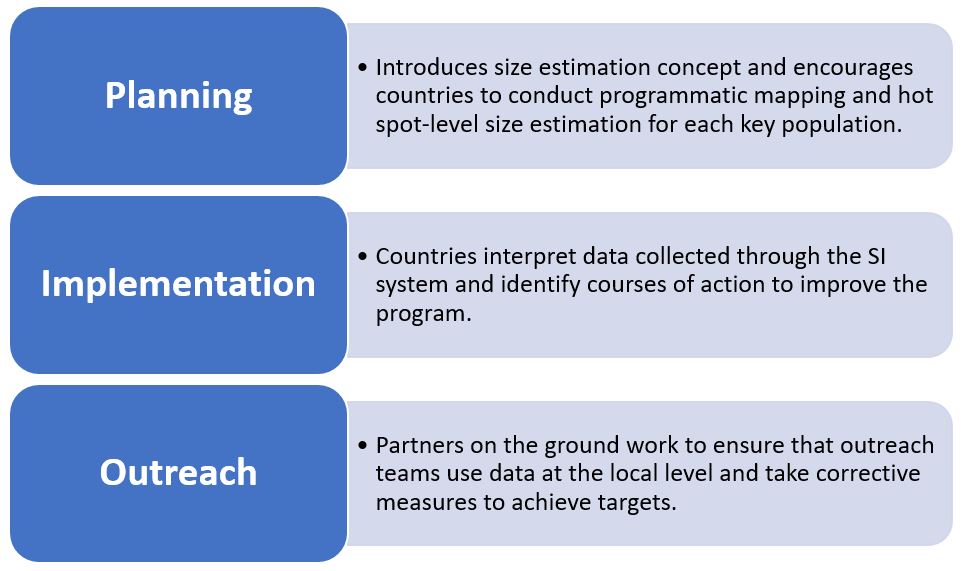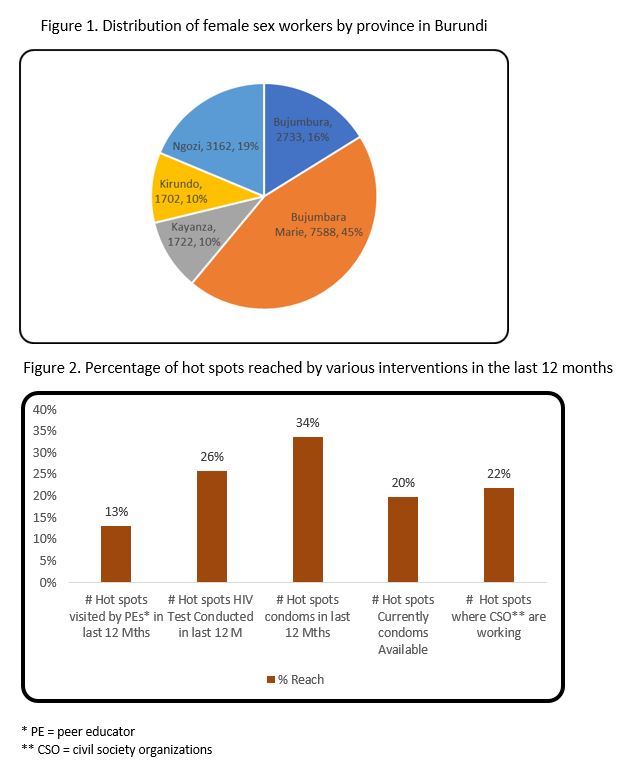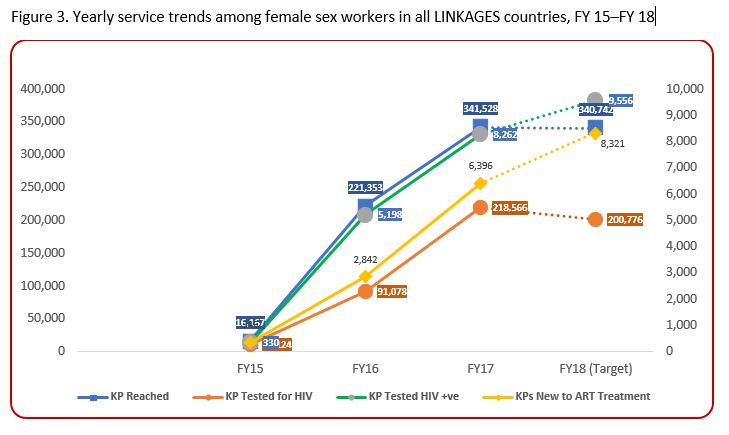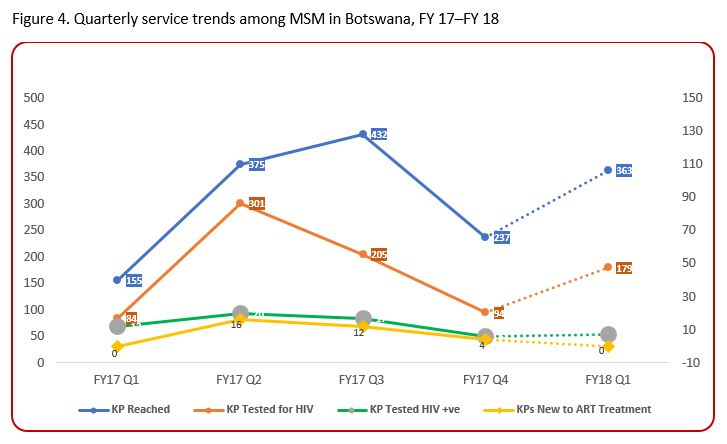Written by Virupax Ranebennur, Senior Technical Advisor, LINKAGES
Strategic information and LINKAGES
Strategic information (SI) is used to support the implementation of an evidence-based approach across the entire USAID– and PEPFAR-supported LINKAGES project. The system consists of global guidelines that standardize the approach for monitoring and evaluation (M&E), tools for assessing M&E and measuring improvements over time, guidance for comprehensive data collection and analysis, data quality assurance mechanisms, regular feedback for learning, and use of data for strategy development. Data are regularly used at the global, country, and local implementing partner levels to track progress toward expected results, as well as to guide decision making related to fine-tuning activities or strategies within the program.
LINKAGES’ SI system focuses on key population (KP) programming during three distinct phases in which programs are planned and their performance tracked.
As a first step, it is important know the size of the population that needs HIV services. LINKAGES has institutionalized hot spot validation by the countries as the first step. This will provide profiles of the hot spots which include KP size, place and time of solicitation, average number of clients, and other characteristics. This helps the program staff understand how to design their outreach. Below is an example from Burundi, where the distribution of hot spots by typology was used for program planning purposes.
The information presented in Figures 1 and 2 provides in-depth understanding of the hot spots and informs planning of interventions for female sex workers. This kind of information is collected in every county to ensure that we understand the KP profiles and can plan the programs appropriately.

Once the program is planned and implemented in the field, it is important to monitor the progress of the intervention so that we reach our goals within a stipulated time frame. There two levels where SI data are used, the country level and the outreach level. At the country level, the LINKAGES SI system monitors key indicators for the progress of the program. Figure 3 is one example of how program progress is monitored at the LINKAGES level for select indicators.
Figure 3 reflects the progress of all LINKAGES countries; however, there could be variations among countries, and, therefore, each country is encouraged to look at the data to see if there is any need for improvement within a quarter or year. Figure 4 shows where quarterly trends are observed and corrective measures are taken in Botswana.
The LINKAGES SI system makes an extra effort to go to the outreach level, mainly to know the reach and HIV testing. Countries monitor these indicators at the subnational as well as the hot spot level.

Through the comprehensive SI system, LINKAGES data are regularly compiled to ensure that we are meeting our targets in a timely manner and within budget. As we have shown, data are also used to identify and address any delays or obstacles and to regularly report achievements. LINKAGES countries are encouraged to develop customized tools for their programs using our standardized program monitoring toolkit. They are also encouraged to use the data at the outreach level using the microplanning tools. This will enhance the ability of the outreach team to identify bottlenecks in the program at the initial stages and find local solutions. In addition, LINKAGES has developed useful tools and documents such as INFOLINK, the indicator reference sheet, Dashboard, and Standard Strategic Information Package (SSIP).
Within LINKAGES, strategic information is not seen as an end in itself but as a key technical area that provides outputs which are used for designing interventions, monitoring the effects of these and measuring changes at the population level. The SI technical team supports LINKAGES countries to implement robust systems to support the collection collation and use of high quality data at all levels. Since the standard PEPFAR indicators are insufficient to track the broad range of interventions that are implemented by LINKAGES, we have developed a set of custom indicators to complement the standard PEPFAR indicators. All 31 countries are using the SI system and have reported improved efficiency and quality of data over the period. For each target population, data are regularly analyzed by age, site, and geographic area. This granular analysis helps us to identify any variation in needs by KPs and focus our interventions accordingly.

